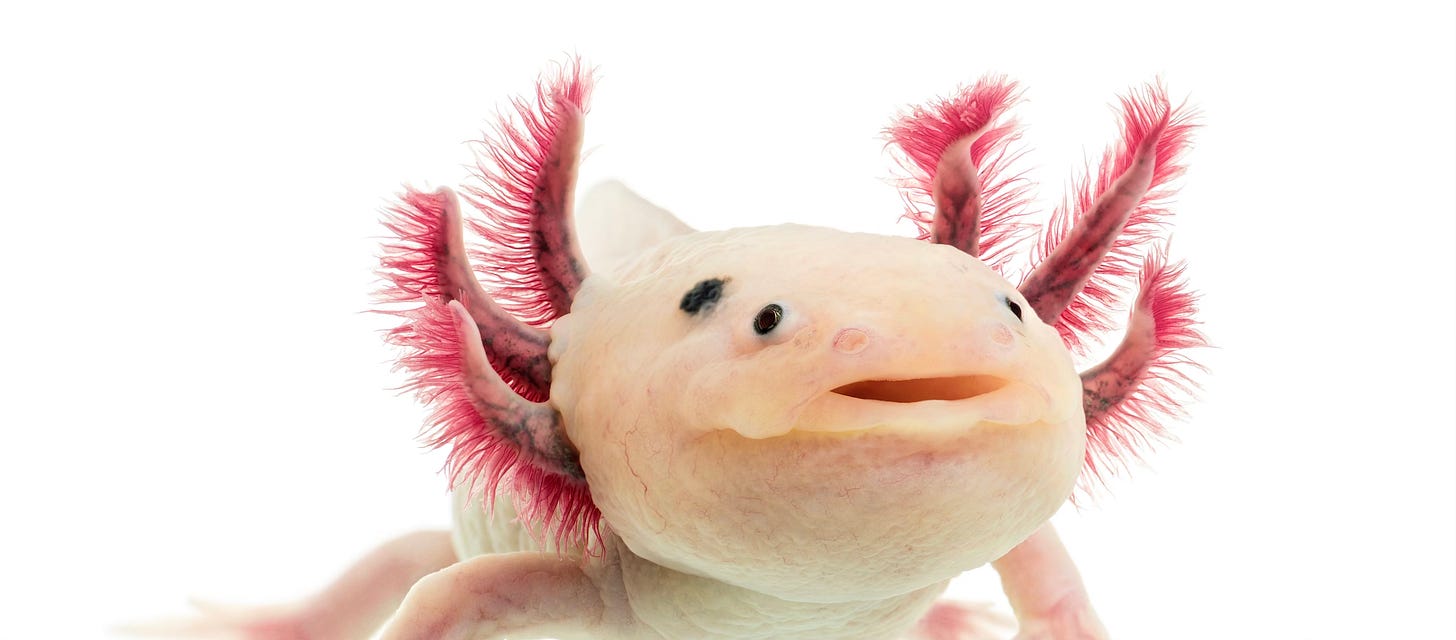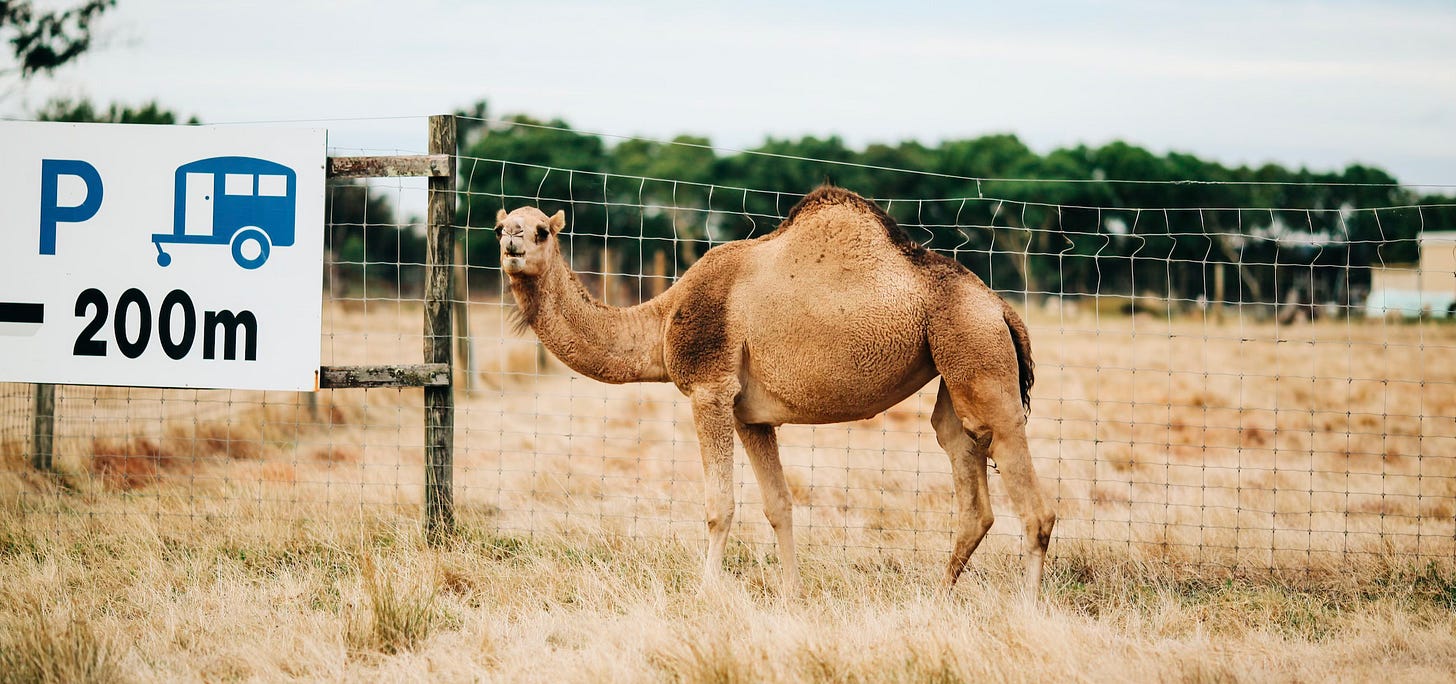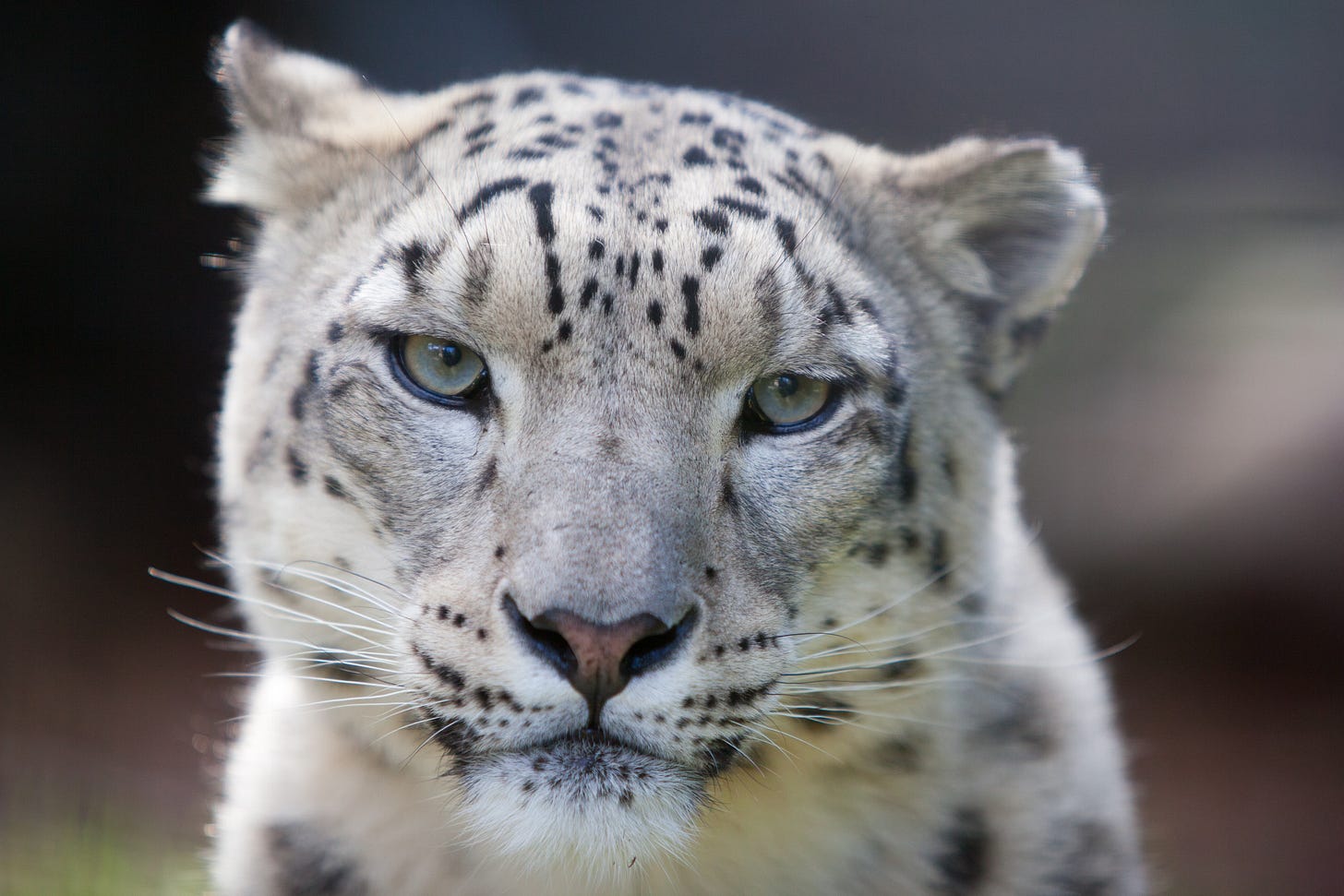The smiling salamander coming back from the brink
Plus, perfume to trick snow leopards and camel burgers to save the outback.
By Dan Fletcher
Here is today’s audio edition.
In a city of more than 20 million people, where ancient canals wind between modern buildings and crowded streets, an improbable conservation success story is unfolding. Mexico City's axolotls — those eternally smiling salamanders that seem more like Pokémon than real creatures — are showing signs of hope in their fight against extinction.
A new study reveals that captive-bred axolotls released into restored wetlands have not just survived but thrived, gaining weight and successfully adapting to life in the wild. It's a remarkable turnaround for a species that saw its population plummet by 99% between 1998 and 2014.
The secret to this success lies in the chinampas — a network of canals and raised garden beds first built by the Aztecs over 700 years ago. These human-made wetlands have historically served as refuges for axolotls, and now they're playing a crucial role in the species' recovery.

Researchers released ten axolotls into a carefully restored 500-square-meter chinampa refuge equipped with filters to improve water quality and keep out exotic fish. They released eight more into an artificial pond. The results? Every single axolotl survived and actually gained weight, proving they could successfully hunt and forage in their ancestral home.
What makes these smiling salamanders so special? Beyond their cartoon-like appearance — those wide eyes, feathery external gills, and that perpetual grin — axolotls possess some truly extraordinary abilities. They can regrow entire limbs, repair damaged organs, and even regenerate portions of their brain. It's no wonder they've become stars of medical research, particularly in studies of aging and cancer.
Their name comes from Nahuatl, meaning "water dog," and they're linked in Aztec mythology to Xolotl, a god who — according to legend — transformed himself into a salamander to escape sacrifice. But while ancient Aztecs revered these creatures, modern Mexico City hasn't always been so kind. Sewage, agricultural runoff, and urban development have devastated their habitat.
The study wasn't without setbacks. Two axolotls fell prey to great egrets, leading researchers to suggest training future releases in predator awareness. But even this speaks to a broader success — the return of natural predator-prey relationships in what was once a severely degraded ecosystem.
"If we can restore the axolotl's population and habitat in a city of more than 20 million people," says study co-author Luis Zambrano to Mongabay, "I feel that we have hope for humanity."
It's a reminder that even in our most developed landscapes, in the middle of one of earth’s biggest megacities, there's still room for wildlife to make a comeback. Sometimes it just takes looking to the past — in this case, ancient Aztec agricultural practices — to find solutions for the future.
Quick links! 🔗
Australia's having a camel crisis, and not even camel burgers can solve it. The country's now home to the world's largest feral camel population (very different from our wild, endangered friends) — up to a million of these 1,000-pound creatures roaming in herds across the outback. They're wreaking havoc on fragile ecosystems, and during droughts, they'll do almost anything for water, from ripping up pipes to knocking air conditioners out of windows. While entrepreneurs are trying everything from camel milk gelato to camel racing tournaments (with a $30,000 purse!), experts say these solutions can't scale fast enough to address the problem. These desert-adapted animals can double their population every nine years, and one rancher flying home recently spotted a herd moving toward coastal areas. The outback's camel crisis might not stay in the outback much longer. (Thanks to subscriber Kevin for the quick link!)
Scientists just proved you can count ghost cats with perfume. In a clever twist on wildlife surveys, researchers in northern India used fragrance to trick notoriously camera-shy snow leopards into perfect photo ops. By spraying perfume below cameras near the cats' favorite scent-marking spots, they got the elusive predators to lower their heads — capturing the unique spot patterns on their foreheads that work like fingerprints. The technique helped document 477 snow leopards in Ladakh alone, representing 68% of India's total population. Most surprisingly, 61% of these cats are living alongside human communities, suggesting conservation doesn't always require complete separation of people and predators. The photos are now part of India's first national snow leopard database, though no word on which perfume proved most alluring to these fashionable felines.
Have a great weekend, everyone!







Awww, a smiling salamander. I've noticed that a lot of amphibians and reptiles look like they are smiling all the time, like that's their resting face.